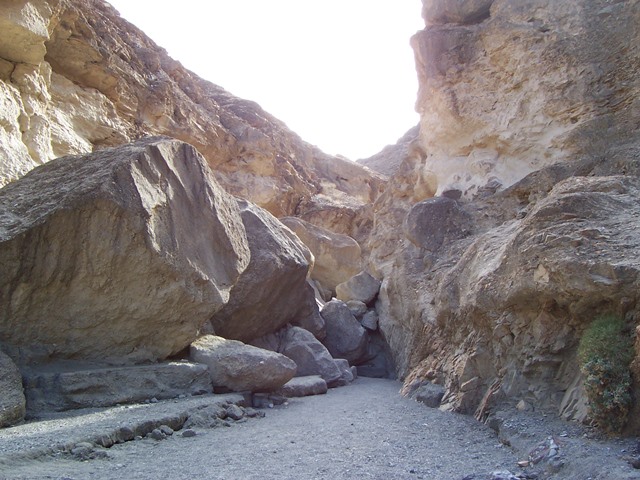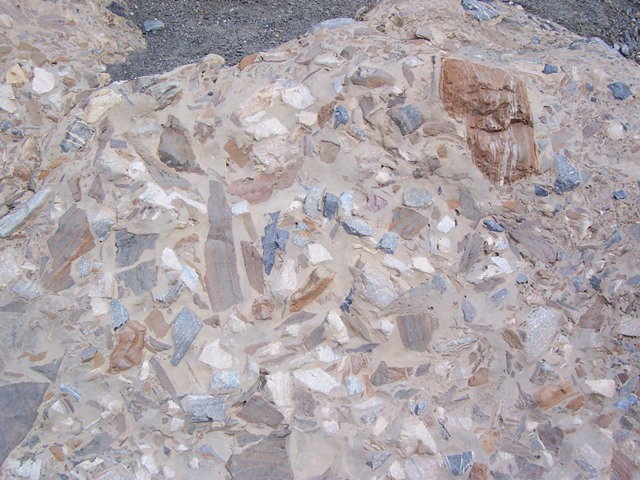Mosaic Canyon-Death Valley National Park
Retrieved from https://www.nps.gov/deva/planyourvisit/mosaic-canyon.html
As we ventured on our hike through the canyon, I discovered the origin of the locality's namesake; the "mosaic" of rocks in the canyon's walls. I first questioned whether this collection of cemented rocks was conglomerate or breccia. After utilizing the knowledge I have to be able to differentiate between the two, I was able to deduce that the walls contained vast amounts of breccia.
Mosaic Canyon-Breccia
Retrieved from https://www.nps.gov/deva/planyourvisit/mosaic-canyon.html
The presence of breccia is important in understanding the formation of Mosaic Canyon as it allows one to understand that the transport of the sedimentary deposits was from a short distance, since the particles in the breccia are angular in shape as opposed to being rounded conglomerate(suggesting water-based transport from long distances). In fact, the breccia formation in Mosaic Canyon is believed to be the result of mudflows racing down mountainsides and picking up many different rocks and carbonates. These carbonates are typically picked up from the Noonday Dolemite formations that comprise much of Mosaic Canyon.
Noonday Dolemite Walls-Mosaic Canyon
Retrieved from http://www.exploretheusa.com/Mosaic_Canyon_Death_Valley_National_Park_-_A_Geologic_Walk_Through_Time
References
BackRoadsWest.(2019). Death Valley. Retrieved from http://www.backroadswest.com/deathvalley/MosaicGeology.htm
ExploreTheUSA.(2019).Mosaic Canyon, Death Valley National Park-A Geologic Walk Through Time. Retrieved from http://www.exploretheusa.com/Mosaic_Canyon_Death_Valley_National_Park_-_A_Geologic_Walk_Through_Time


No comments:
Post a Comment